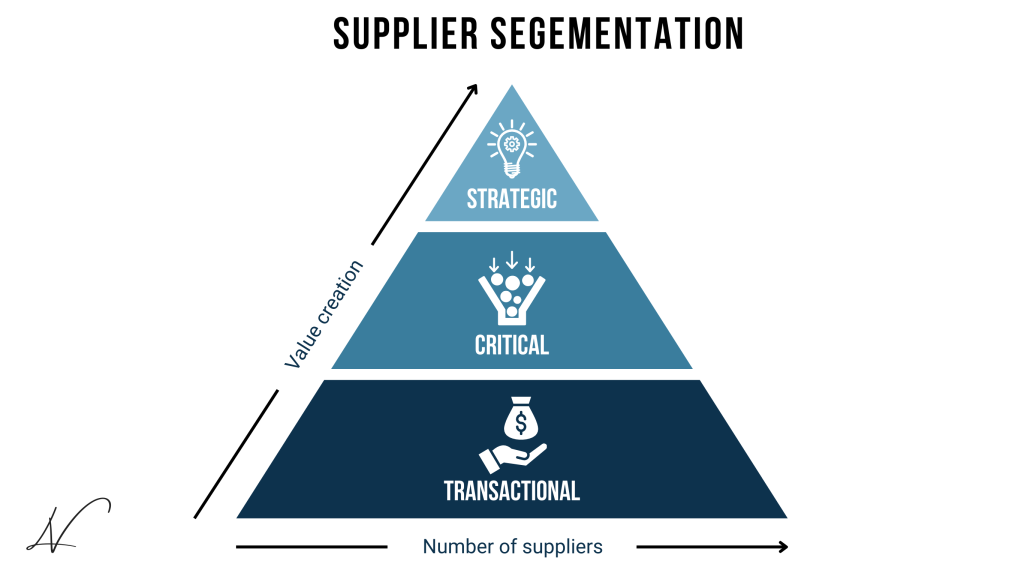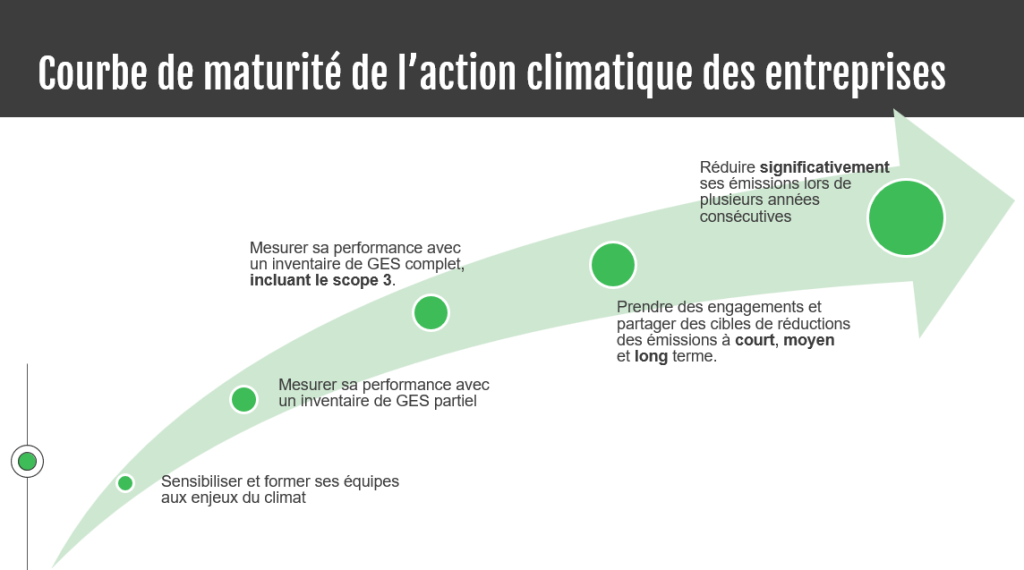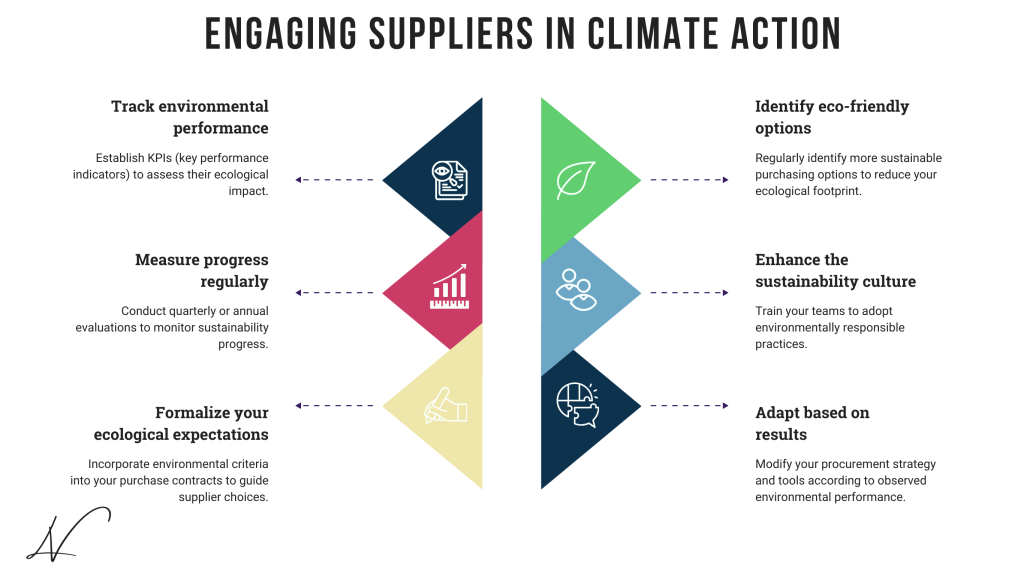This article was written in collaboration with Théo Boucherie, a carbon consultant at Sustainscale
Did you know that your suppliers can account for up to 85% of your greenhouse gas (GHG) emissions? Learn how to tackle this challenge through a sustainable supplier selection process.
The growing importance of environmental criteria in business management makes this a key challenge. This raises a critical question for companies: how can these criteria be integrated into the supplier selection process?
According to a study by Sustainscale involving over 1,500 companies, approximately 85% of emissions fall under Scope 3, meaning they are indirect emissions. As explained in this article about The Impact of a Responsible Purchasing Policy, these emissions are often the direct emissions of your suppliers.
This means businesses are heavily dependent on the carbon footprint of their suppliers. Even significant internal efforts to reduce emissions may have limited impact if suppliers do not adopt similar measures. Conversely, if suppliers take action, it could substantially reduce the overall carbon footprint of your products.
1. Why Should Supplier Selection Include Environmental Criteria?
Supplier selection is a critical process for ensuring the quality of products and services delivered to your company. Typically, this evaluation begins with criteria such as cost, quality, and delivery timelines. However, in light of new environmental demands, integrating sustainability criteria has become essential.
Start by assessing your current suppliers, particularly strategic ones—those representing high volumes or significant revenue shares. A thorough evaluation of their environmental practices can strengthen your overall quality process while aligning with broader frameworks like ISO 9001 certification.

When conducting this process, ensure that you standardize and rationalize the evaluation process using a multi-criteria framework. This provides a more precise understanding of your suppliers’ overall impact on both your carbon footprint and that of your business.
You can then apply this same approach to select new suppliers by incorporating these environmental criteria into your needs definition or procurement tender requirements.
2. How to Define Environmental Evaluation Criteria for A Sustainable Supplier Selection
Begin by questioning your suppliers on specific actions they have undertaken. For example:
- Have they conducted a carbon footprint assessment?
- Do they have a strategy to reduce their emissions?
This initial step helps you quickly determine whether they are already engaged in sustainable practices. Once this first step is completed, you can go further by verifying whether they comply with specific standards, certifications, or labels such as those mentioned in this Responsible Procurement link.
For suppliers willing to provide more detailed information, you can assess the scope of their carbon footprint assessment and evaluate how effective their emission reduction plans are. This enables you to distinguish suppliers with solid, actionable plans from those whose efforts remain symbolic.
Finally, to go even further, you can implement long-term tracking indicators to monitor suppliers’ environmental performance. This will help you analyze their progress and adjust your expectations accordingly.

2.1 Carbon Pricing
Some methods enable companies to compare offers and guide supplier selection while integrating environmental criteria. One effective approach is to assign a carbon price to emissions.
This can involve using an internal carbon price or aligning with prices from regulated or voluntary carbon markets that your company participates in. By doing so, you assign a monetary value to the benefits of lower-emission products.
This strategy can be particularly relevant if your products are exported to regions with Carbon Border Adjustment Mechanisms (CBAM).
2.2 Temperature Scoring
A more advanced way to evaluate the effectiveness of a supplier’s emission reduction trajectory is by using temperature scoring indicators. These tools assess how well a supplier’s actions align with specific global warming trajectories.
- A supplier with effective, impactful actions may align with a 1.5°C trajectory, meaning their efforts contribute to limiting global warming to this target (assuming similar actions across all companies).
- Conversely, less advanced suppliers may align with 2.5°C, 3°C, or even 4°C trajectories.
This scoring system provides a clear framework for classifying suppliers based on their efforts to achieve meaningful carbon reductions.
3. Compiling Results: Multi-Criteria Analysis for Sustainable Supplier Selection
The results from these advanced methods allow for rigorous and precise analysis, especially when managing a large supplier base.
Once you’ve gathered information on suppliers’ environmental practices, compile the results into a multi-criteria evaluation table. This table should include traditional criteria alongside newly integrated environmental factors, providing a comprehensive view of your suppliers’ overall performance.
3.1 Sample Supplier Evaluation Table
| Criterion | Weighting (%) | Supplier A | Supplier B |
|---|---|---|---|
| Carbon footprint assessment | 10% | 9/10 | 7/10 |
| Emission reduction strategy | 5% | 8/10 | 6/10 |
| Environmental certification | 5% | 10/10 | 5/10 |
| Carbon pricing | 10% | 7/10 | 9/10 |
| Product quality | 30% | 8/10 | 8/10 |
| Product pricing | 20% | 9/10 | 7/10 |
| Delivery reliability | 20% | 6/10 | 9/10 |
| Total Score (out of 10) | 100% | 7.9/10 | 7.75/10 |
3.2 Prioritization and Weighting: Which Environmental Actions Matter Most?
a. Actions Speak Louder Than Promises
Climate change won’t be mitigated by empty promises. Evaluate your suppliers based on factual, measurable emission reductions rather than intentions or commitments.
For these reductions to be credible, they should be:
- Quantified through successive GHG inventories conducted annually.
- Aligned with ISO 14064-2 standards, including a clear and realistic baseline scenario.
b. Early Actions Have a Greater Impact
Cumulative GHG emissions are the primary drivers of climate change. Actions taken earlier have a more significant impact, as they:
- Prevent new emissions year after year.
- Reflect a supplier’s maturity in sustainability efforts, making them more reliable partners for your business goals.
4. Actions to Engage Suppliers in Climate Action
Conducting a sustainable supplier selection and evaluation process should not be limited to a one-time analysis. It’s crucial to embed this process into your long-term strategy. Here are some ways to sustain collaboration:
- Develop key performance indicators to track suppliers’ environmental performance.
- Conduct regular evaluations (quarterly or annually) to monitor progress.
- Create a responsible purchasing charter to formalize environmental expectations in contracts.
- Continuously explore sustainable alternatives through active market research.
- Train your teams to strengthen the sustainability culture within your organization.
Adjust your strategy and tools based on the results to ensure ongoing improvement.

Conclusion
Selecting suppliers through a sustainable supplier selection process is essential for reducing your company’s carbon dependency and strengthening the resilience of your supply chain. By incorporating these criteria into your evaluation processes, you can align your environmental goals with those of your partners and contribute to a more sustainable future.
Looking for advice on how to implement an environmental evaluation of your suppliers and reduce your Scope 3 emissions? Contact us today for a personalized assessment.

About the Author
This article was written in collaboration with Théo Boucherie, a carbon consultant at Sustainscale. Sustainscale helps businesses measure and reduce their GHG emissions, empowering them to become sustainable and profitable organizations.


![Read more about the article What is a purchasing policy and why do private companies need one? [WITH TEMPLATE]](https://lolitaverite.com/wp-content/uploads/2024/10/Purchasing-policy-300x225.png)

